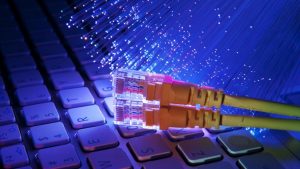
How much you know about fiber optic technology? When it comes to data center networking, fiber optic cables are becoming the standard rather than copper.
As compute power consolidates and software-defined networking becomes more prevalent, fiber optic cables emerge as the standard for high-speed connections.
Copper connectivity is quickly becoming antiquated, and fiber optic networking isn’t just for special use cases anymore. When it comes to working with data center networks, a basic knowledge of the types of fiber optic cables at the very least is a requirement in today’s world.
Here we will share a quiz for testing how much you know about fiber optic cables in the data center. This short quiz has been provided by Erica Mixon from techtarget.com.
QUESTION 1
In today’s data center appliances, which type of data path interface is most common?
- 1 GbE
- 10 GbE
- 1.25 GbE
- 1 TB
QUESTION 2
Which of the following is not a feature of Digital Diagnostic Monitoring?
- Feeds network managers information about the optics
- Provides critical information, such as receive light level, transmit power and transceiver temperature in real time
- Connects out-of-band networks at lower link speeds
- Allows IT teams to ensure the transceiver and fiber cable work properly
QUESTION 3
Which color is most commonly used to indicate a regular multimode optical fiber?
- Aqua
- Violet
- Yellow
- Orange
QUESTION 4
What is the maximum bandwidth that a small form-factor pluggable (SFP) module provides?
- 1 Gb
- 1.25 Gb
- 10 Gb
- 2 Gb
QUESTION 5
What is the range an SR optic (10GBASE-SR) can support on standard multimode fiber?
- Over 1,000 feet
- Up to 700 feet
- 330 feet
- Up to 40 feet
QUESTION 6
What do SFP and SFP+ modules rely on for fiber optic connectors?
- SC-type
- FC-type
- LC-type
- ST-type
QUESTION 7
What is the standard unit of measurement for optics’ receive light levels?
- Decibels
- Gigabytes
- Volts
- Lumens
The CORRECT ANSWER
QUESTION 1
CORRECT ANSWER: 10 GbE
The transition to 10 GbE helps with the migration from cobber to fiber connectivity. In the past couple of years, the 10 Gigabit Ethernet standard has become more popular, as it connects current to copper, fiber optic cables and twisted-pair copper. Ten GbE is 10 times faster than Gigabit Ethernet, but it has potential issues regarding replacing legacy network technologies, such as multiprotocol label switching.
QUESTION 2
CORRECT ANSWER: Connects out-of-band networks at lower link speeds
Most new optics include Digital Diagnostic Monitoring, also known as Digital Optical Monitoring. Network managers can use the information these systems provide — such as receive light level, transmit power and transceiver temperature — to troubleshoot optical links. Alternatively, forms of connectivity, such as copper, are used for out-of-band networks.
QUESTION 3
CORRECT ANSWER: Orange
Colored outer jackets on fiber cables help networking teams identify, classify and organize cable types. Most multimode optical fibers have an orange outer jacket, single-mode optical fibers have a yellow jacket and OM3 or OM4 multimode cables have an aqua jacket, according to the Fiber Optic Association.
QUESTION 4
CORRECT ANSWER: 1.25 Gb
SFP modules can provide bandwidth up to 1.25 Gb, but the SFP+ module can support 10 GbE in the same form factor as SFP. SFP modules can be easily interchanged and updated, making them suitable for fiber optic networking.
QUESTION 5
CORRECT ANSWER: Over 1,000 feet
The SR optic, or 10GBASE-SR (short reach), is typically used on all 10 GbE applications. 10GBASE-SR is used for short-distance connections with a multimode fiber optic. It depends on the type of fiber optic cables used, but it can support a maximum of 400 meters, or 1312 feet.
QUESTION 6
CORRECT ANSWER: LC-type
Different form factors require different fiber optic connectors. SC and LC connectors are the most common types of connectors. While older modules use SC-type connectors, SFP and SFP+ rely on LC-type connectors. Today, all standards require LC connectors in two-strand fiber connections.
QUESTION 7
CORRECT ANSWER: Decibels
Optics include a published range of receive light levels, and these measurements are typically in decibels. The decibel expresses the ratio between two signal power, voltage or current levels.


